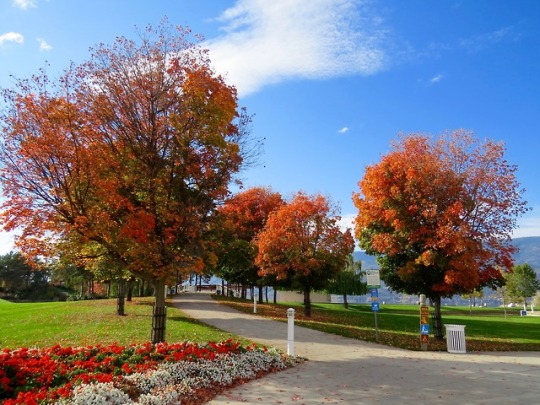Text
The Best Advice On Growing A Great Organic Garden
It's no secret that not everyone out there has a green thumb. And if you're one of the many who don't, you might believe that gardening can be difficult. However, with the right information, gardening can be quite easy. We truly hope that these tips will get you started on a lifetime of successful, happy, gardening and learning.
You do not need store-bought chemical treatments for plant mildew. Mix a little liquid soap and baking soda in water. Spray this onto your plants about once per week or until it subsides. Baking soda will not damage your plants and treats the mildew gently but efficiently.
Grow some wheat grass or catnip for your cat to eat instead. It may also work to add citrus peelings or mothballs to the soil of the plants, because the odor is unpleasant to cats.
If you have a vegetable garden, it is crucial they are kept in a spot with at least six hours of sun each day. Most vegetables need that much sun to grow rapidly and successfully. It's also the same for some types of flowers.
If you are looking for an all-natural, organic way to weed your garden, consider "boiling off" the weeds. The safest herbicide that you can probably find is a cup of boiling water. Although this method is organic, it does pose a danger to your plants. The boiling water will damage the roots of the weeds and will usually prevent further growth.
Irises should be divided. Take clumps that have become overgrown and divvy them up into separate plants. If you find any dead irises in your garden, immediately pull up the bulbs. The bulbs should automatically divide in your palm, and once you put them back into the earth, they will typically flower the following year. You can divide rhizomes with a knife. Cut out new pieces from outside the bulb and throw away the old center. There needs to be a minimum of one healthy offshoot on each of the new sprout sections. Immediately replant all your selected cuttings.
Avoid sun damage by dressing appropriately whenever you will be gardening in the sun. Wear hats and sunglasses, and make use of sunscreen. When using the right protection in the sun, you will lower your chance of getting a sunburn and decrease your risk of getting skin cancer.
Not as bad as you thought, correct? Like anything else, gardening has a lot of information that can be learned and applied. With a few basic tips, you can get off to a good start on your gardening adventure. You should hopefully get what you can from these tips.
2 notes
·
View notes
Text
Follow This Information To Get You Garden Growing
Do you always admire your neighbor's pristine garden. One might be tempted to believe that the neighbor has stumbled onto a gardening secret. Truthfully, there is no super-secret formula for a gorgeous garden. Once you learn some basic rules to follow, you will be ready to plant your own garden. You can start to increase your gardening knowledge today by reading the information below.
Clay soil is hard and will also stick to a shovel, making it difficult to work with. To make working in clay easier, rub the shovel with floor or car wax and then buff it with a cloth. The wax prevents the clay from sticking to the shovel, and stops rust from forming.
Soil needs to be rich in certain nutrients to grow healthy plants. The soil may have to be adapted, depending on what types of plants you're planning for the garden. You can simply use one type of soil to make an artificial area.
When you decide to add vegetables into your garden space, be aware that they must be placed where they will receive direct sunlight for a minimum of six hours daily. Most members of the vegetable family need this minimum of light for proper growth. This also rings true for some of the flowers.
If you find yourself in love with mint leaves, but not with how they dominate a garden, read on. That's why it's better to place mint in containers rather than letting it have free rein in your garden. You can bury the container so the top is flush with the ground if desired, but the container's walls will prevent the roots from spreading so that the plant won't take over your entire garden.
Place at least an inch of mulch that is organic in with your veggies! Mulch helps the soil surrounding the plants remain moister for a longer time. It will also prevent weeds from sprouting. This could save you lots of weed-pulling time.
Be aware of the optimum time frame for harvesting vegetables. Each variety needs a slightly different amount of growing time to produce the most flavorful vegetable.
Harvesting zucchini is best done when they are small and baby peas should be harvested when they are young.
However, you get better taste out of tomatoes that have been allowed to ripen as much as practical while still on their vine. Research the best time to pick your produce.
The advice in this article shouldn't be difficult to understand and learn from. Now that you have learned what to do, it is time to apply it. Pay heed to the response of the plants as you work with them. If one thing fails, give another a go. With patience and attention, your garden will become a source of pride for you and your neighborhood.
See more at: https://ratanland.pl/
5 notes
·
View notes
Text
Grow Your Gardening Knowledge - Here's Some Great Tips
As a quick gardening tip, you should seek out accurate information to help you develop the proverbial green thumb. The Internet is one, and you could easily lose track of time as you peruse sites searching for what you need. Thankfully, all the best tips you need are right here in the following article that will help get you started. Read on to find out what they are.
Choose higher yield plant varieties. Hybrids are usually hardier in terms of disease and weather resistance, and are designed to produce more.
If you want to keep your garden free of pests, start with healthy soil! Healthy soil encourages vigorous plant growth and makes your garden more resistant to common diseases and insects. For the most vigorous and healthy plants, start with high-quality soil, and stay away from chemicals. These can accumulate salts over time.
Cover the fences and walls with climbers. Climbers have many different uses and spread quickly. They can cover an arbor, or grow through trees and shrubs. Sometimes the plants will require being tied to supports, but some climbers will attach themselves naturally. You can be sure that varieties such as climbing roses, wisteria, jasmine, clematis and honeysuckle will grow very well.
Transfer your favorite plants inside so they survive the winter. You may be able to save your most resistant or expensive plants. Remember to be gentle when digging up your plants; carefully dig away from the roots and gently place the plant into a container.
Analyze the soil before you even get started with working in a garden. A soil analysis is inexpensive and can be used to figure out which nutrients should be added to provide a healthy garden environment. A lot of extension offices will offer this service and it is worth it so you know what your soil needs.
Remove your garden's weeds! Weeds can turn a beautiful garden into an eyesore. White vinegar has been known to kill weeds quickly. White vinegar is a fantastic weed killer! Putting white vinegar on your plants gets rid of much of the need to pull out the weeds.
Split up the irises. Increase your iris stocks by dividing your overgrown clumps. Try to life the bulbous irises when foliage begins to die. The bulbs should automatically divide in your palm, and once you put them back into the earth, they will typically flower the following year. For plants with rhizomes, use a knife to divide them. New pieces should be cut from the outside, then the old center you want to discard. Every piece should contain a strong offshoot. Replant your cuttings immediately for the best results.
During the day, when the weather is hot, vegetables tend to be softer, which causes them to be damaged even if you gently pick them. You can also protect both your vegetables and the plant they grow on by cutting them off instead of twisting them off.
Take care of your knees while working in the garden. Many people experience back pain and stiffness from bending over and working in the garden for extended amounts of time. Kneeling down on the ground is a more comfortable way for many people to tend to their gardening chores. Use a pad to kneel upon and protect your knees from possible pain.
If you have a cut, be careful about exposing it to soil or gardening chemicals. If grime gets into the cut, it could become infected. These days, bandages are available that can totally seal the cut.
Pay attention to how much light your indoor plants are getting. If you live somewhere without strong natural sunlight, you might want to look into growing plants that thrive in lower-light environments. If you still are unable to get enough light to your plants, consider purchasing grow-lights.
Make sure you have your gardening tools near you, so you can maximize your gardening efficiency. Wear pants with multiple pockets or use a toolbox or large bucket. Keep your trowel, pruning shears and gloves handy so you can do your garden work quickly and easily.
Don't underestimate pine as a great mulch. Acidic soil is a favorite of garden plants that are high in acidity. For such plants, pine needles function both as a handy mulch and as a soil amendment to lower the pH. Spread the needles over the beds in a layer that is approximately 2-inches deep. Over time, the needles will begin to decay, supplying the soil with acid as they do.
The space you leave in between your plants is an important measurement when it comes to gardening. Leave a little more space than you think your full grown plant will need to make up for overgrowth. Plants don't just need enough space for their physical size; they also need enough space for the air in your garden to circulate properly. Try to plan your garden and place sufficient distance in between your seedlings.
The growth of organic garlic is simple. Plant individual garlic cloves early in the spring or fall. They should be planted in well-drained moist soil. Plant the cloves one to two inches beneath the soil about four inches apart and with the pointed end up. You can cut green garlic shoots while they grow, you can then use them in place of scallions and chives. When the tops of the bulbs begin turning brown, they are ready for harvesting. The bulbs should be allowed to dry in the sunshine for a few days; the heat will harden the skin. They could be stored in an area that is cold, tied or loose in bunches.
Gardening can be highly rewarding and a wonderful experience. As you develop your passion for your garden, you will find yourself seeking out articles and tips about improving your results. Use all of the gardening information you can get your hands on. Start out with the tips you have learned from this article, and soon you will have an amazing garden that you thought was never possible.
2 notes
·
View notes








